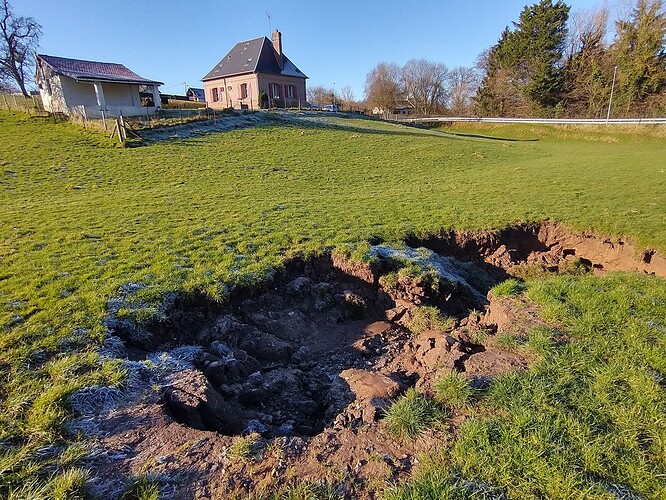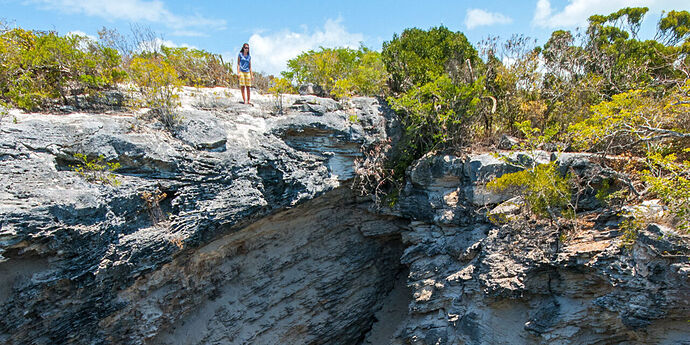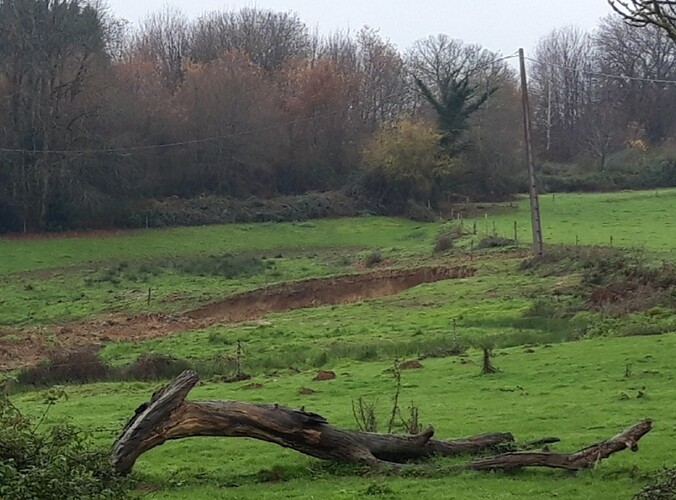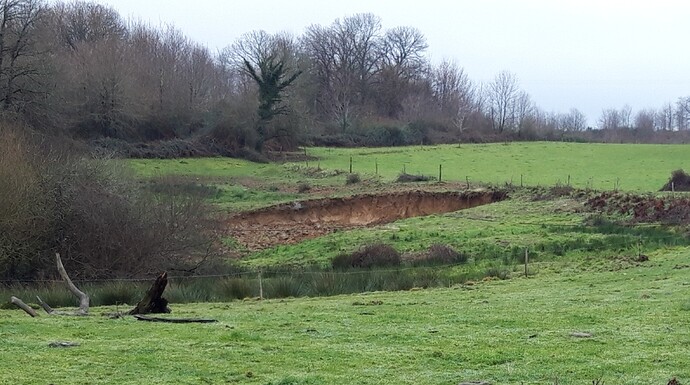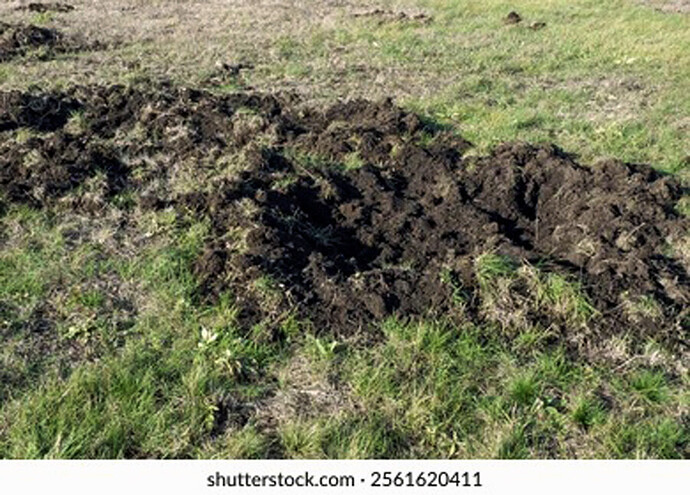After recent heavy rains, flows of topsoil running off nearby farmland have opened up a hole in a field directly below our house. The hole is about 7-8m wide and about 1.5m deep. I suspect there is nothing much to worry about, or do about it and in any event it’s not (quite) on our land. Does anyone have any experience of similar holes appearing near them?
The farmer reckons it’s on the site or an old marl pit where in times past, marl was extracted to fertilise fields.
Locally to where I live is a stone quarry where holes have opened up in adjacent fields over tunnels underground. Any stone quarries nearby?
It should be possible to find out if your area is prone to subsidence or has caves… though that one doesn’t look too serious.
When I lived in Turks & Caicos we had a large hole just up the road from my house in Long Bay - imaginatively entitled “The Hole”! The islands are made of limestone and there are lots of caverns and underground holes all over the place.
This one was a minor tourist attraction - people used to drive up, park for ten minutes, look into the hole then get back in their cars and go off again. ![]()
Perhaps you should charge €5 a pop for people to visit your giant declivity…
Our nieghbour farmer has a source in his field that provides water for his cattle.
I noticed a few weeks ago that the ground above the source was moving.
The hole in the photos was not there before.
I started taking photos as the electricity pole above the hole is linked to our supply.
Last month the hole grew again and took the power line with it!
We still have power but last week received an email of impending work on the line due to an incident!
Work to be carried out end of February.
You can see the cable lying on the ground.
Spot on…I wasn’t until very recently, remotely familiar with marl pits (marinières). However it appears that Normandy is particularly prone to cavities appearing in fields, due to the extraction from the middle ages to early 20th century of marl (marne). This is a sedimentary clay/limestone rock, used locally for building and also as a fertiliser on fields.
The farmer reckons he’s had to fill in several on the land around his nearby farm. The local plan (PLU) also warns of cavities in fields about 1km away, probably again due to historic marl extraction, so I suspect this is the culprit. The farmer also told me that one of his cows actually fell in a cavity a few years ago, and they had to get the sapeurs to winch it out (unharmed!). I just hope nobody ever dug a marl pit in our garden (no sign of one, but that hole in the photo shows how close it is to our garden).
In my early days in France, in the 1990s, when there was no such thing as a déchèterie around, I asked a neighbour where I could dispose of junk - old fridges, mattresses etc. He gave me directions to an open field where there was a hole, deep enough to swallow a whole load of junk. Everyone locally used it!
Nearby on the other side of the road was the entrance to a disused stone quarry/mine with tunnels radiating out under the fields.
You didn’t, couldn’t dispose of junk in those days, you kept it.
I once visited a huge cave complex in south central France and the guide explained how for years before access was achieved the locals used one of the holes in the ground to dispose of junk. All of the junk had been removed long before my visit.
It reminds me of my childhood in Cornwall where there were woodlands that I was not allowed to explore because of the likelihood of unmarked mine vents possibly hundreds of metres deep. In the day their presences was often marked only by a holly tree. I went to a brand new Sixth Form College which bought a nearby field as a sports field. It was only once they started developing it that they discovered it was the site of an actual mine shaft. It cost a small fortune to plug and be made safe.
My first thought on seeing @George1 's hole was sangliers, the field behind our forest is full of such damage.
Blimey David - what sort of sangliers do you have round you that could dig 1.5m trenches?!! ![]() Our local sangliers do emerge from the forest seen in the background of the photo, but they content themselves with making furrows of about 5-10cms deep. Still damaging if you’re the lucky farmer. I think in our case, sangliers are probably innocent of all charges, and believe it’s a combination of mud erosion and ancient mining that are responsible for the hole here…
Our local sangliers do emerge from the forest seen in the background of the photo, but they content themselves with making furrows of about 5-10cms deep. Still damaging if you’re the lucky farmer. I think in our case, sangliers are probably innocent of all charges, and believe it’s a combination of mud erosion and ancient mining that are responsible for the hole here…
They are not that deep, but they are deeper than 10 cms, but it is not so much the depth that matters more the lumps thrown up as a result.
Thank goodness your new Cedders wasn’t mowing there at the time!! ![]()
![]()
